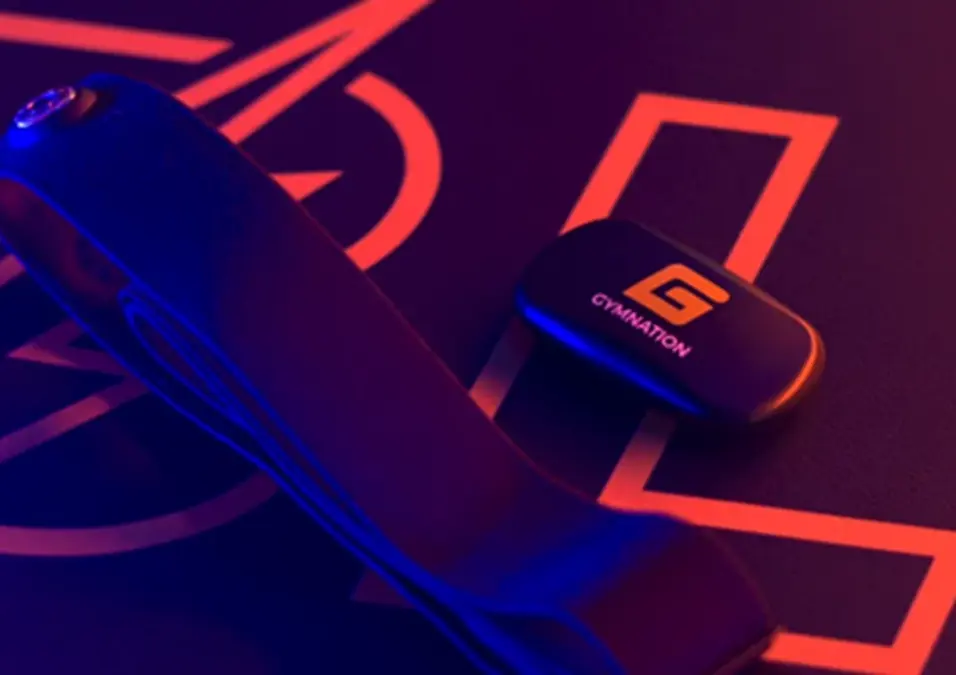The Top Benefits of Heart Rate Tracking in HIIT

SIGN UP FOR YOUR FREE DAY PASS TODAY!
What if you can achieve much more during your workouts with a simple indicator such as heart rate tracking?
In GymNation’s article about the benefits of HIIT training, we explained how HIIT might be all you need for weight loss and building muscle when you have little time.
A heart rate monitor guarantees the efficiency of every second you spend in high intensity training and brings you closer to achieving your fitness goals.
But heart rate tracking isn’t useful only in high-intensity cardio training. It can also be beneficial during your weightlifting sessions, running, hot yoga, or even walking.
What Is Heart Rate Tracking?
Heart rate monitors are the best gauge of the efficiency of your high intensity training.
The indicator of your exercise intensity is the number of heartbeats in a minute.
The targeted heart rate is conveyed in percentage (usually between 50% and 85%) of your maximum heart rate.
Heart rate tracking will help you reach your targeted heart rate safely, without compromising your cardiovascular health.
During high intensity training, your heart rate will go from periods of high beating to low beating.
The main goal here is to make your heart pump blood at a higher rate so you can spend more energy and thus burn more calories in a minute.
While the 'normal' heart beats 60-100 times per minute, in athletic people it has a slower pace at 50-60 beats per minute. Different heart rates depend on your physical activity and what you want to achieve with it.
Heart rate tracking also shows your VO2 max, which refers to the maximum amount of oxygen your body can use at a time. The VO2 max is a sign of your cardiovascular fitness and endurance level.
Everything You Need to Know about Maximum Heart Rate and Heart Rate Monitors
You can calculate your maximum heart rate (MHR) by subtracting from 220 your age. For example, if you are 30 years old, your maximum heart rate is (220-30=) 190 beats per minute.
Going more than that is not good for your health, so maybe you're pushing yourself too much. Or other times, too little. That’s precisely why a heart rate monitor is beneficial.
Moderate exercise intensity is about 50-65% of your maximum heart rate. In the case of the 30-year-old person, it is 95 beats per minute. This makes for low-intensity workouts or during the recovery periods of HIIT training.
Vigorous exercise intensity is over 70% of your maximum heart rate. (With a 30-year-old person in mind, from 130 beats per minute.)
On the other hand, not all people can reach these numbers. So, make sure to not push yourself more than you should do.
Heart rate monitoring is useful for people who suffer from heart diseases, blood pressure, arthritis, or obesity as well.
The Major Benefits of Heart Rate Tracking (Not Only) for High Intensity Training
High intensity training doesn't mean going intense for a longer interval rather than reaching your maximum power in each interval.
Rather than being able to stay at a high heart rate for longer, pushing it higher for a shorter interval is what you should aim for.
Also, the aim of heart rate tracking doesn't stop at just the high-intensity intervals during your workout. Tracking your recovery and rest time will show when your heart rate will be back to normal.
Then you are ready to go for the next high-intensity interval.
With a heart rate monitor, you learn more about your body and how it reacts when trying different things. After some time, what was a high-intensity will become e medium-intensity level.
Your workouts will not only become easier over time because you’ll consistently be tracking it, but at the same time, it will add a fun factor, a challenge to push yourself every time more.
You'll be more aware of how much more you can train as well. The feedback can be easily translated into small actions that will make your workout more efficient.
You can adapt your workout to meet your needs following the time and calories you want to burn.
Knowing how much you’re really working during the intense workouts- if it is healthy, or if you can push for more will keep you accountable and motivated in a challenge with yourself.
Types of Heart Rate Tracking and Heart Rate Monitors
There are traditional ways to measure your maximum heart rate percentage, such as the Rate of Perceived Exertion (RPE), talking while you work out, or failure reps.
But why do all the calculations yourself when technology offers us better ways? As of 2022, heart rate tracking gadgets are quite affordable for everyone.
Most heart rate monitors will show the heart rate percentage, VO2 max, calories burnt in a minute, and other indicators on the spot.
Some of the most popular heart rate tracking gadgets in 2022 are:
- Heart rate monitors built-in in gym cardio machines such as bikes, treadmills, rowing machines. They are less accurate, but a good starting point to monitor your heart rate.
- Chest strap sensors collect electric signals by the beating and contractions of the heart.
- Wrist heart rate trackers with heart monitors or smartwatches.
- Smart Rings are more in the expensive range of smart fitness gadgets, but they are highly functional.
- Bicep straps sensors work in the same way as a chest strap. The difference depends on the preference of the individual.
There are many options online to consider and buy based on budget, functionality, features, and brand. Healthline has compiled a list of the best heart rate monitors of 2022.
Are Heart Monitoring Classes any Good?
Heart monitoring classes have become the new popular fitness choice where every person’s heart rate is shown on the screen in front of all the class.
The screening of the heart rates serves as a comparison and a motivator. The challenge doubles in these classes, since you have one with yourself and others, in a fun and inspiring way.
Even though they might seem intimidating, especially for beginners, there are many HIIT classes in Dubai where you can get support from your instructor and classmates to reach your goals.
Why Is Heart Rate Tracking Best for Weight loss?
Has weight loss been difficult for you despite your endeavors at the gym?
Beyond many factors that might affect it, the Rate of Perceived Exertion (RPE) might mislead people.
You might think you’re working at your maximal intensity, but that might just be your perception. With a heart rate monitor, you’ll know exactly what’s your heart rate throughout the workout.
The information will not make you change your level in a day, but at least you will know and incorporate this information in your workouts.
If you're going with a lower heart rate, you’ll push yourself further and still ensure you are training at a healthy rate.
The more beats per minute, the more energy is required from the heart, which translates into more calories burnt. And your heart rate tracker will tell you all about it while you're exercising and save the data to see your progress.
Generally, 50% to 65% of your heart rate is the fat-burning zone, but it doesn't stop there. Pushing for a higher intensity means decreasing the time you have to work out.
You’ll be in control of your calories burnt during the workout and make sure to progress at the desired rate.














































































